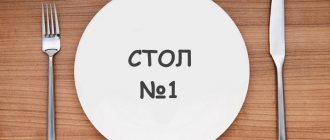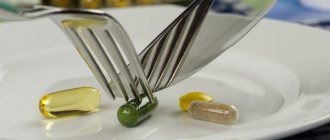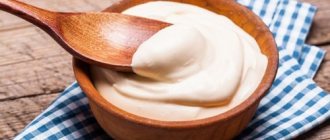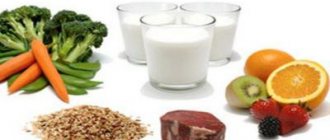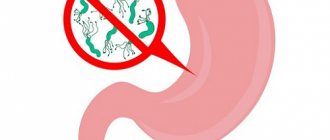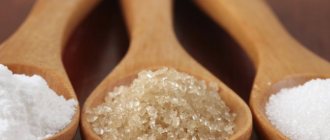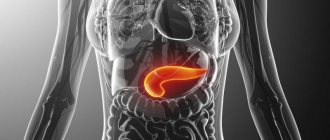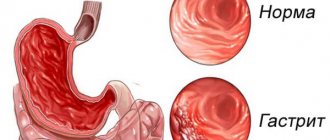What is reflux esophagitis?
Acid reflux, also called heartburn, is caused by acidic stomach acid that backs up into the esophagus from the stomach - it is associated with gastroesophageal reflux disease (GERD), a more severe form of the problem. Acid reflux causes a burning sensation in the chest and throat.
Most people assume that eating high acid foods and too much stomach acid causes heartburn/GERD symptoms. In fact, it's the other way around. Low stomach acid and poor digestion are most likely the real culprits.
These problems cannot be solved overnight with dietary changes or other changes, but you can get significant relief fairly quickly if you adopt a healthier lifestyle.
Read more about the diet for heartburn here.
About 4-10% of all adults experience symptoms typical of acid reflux or GERD daily, and up to 30% of people living in Western countries do so weekly (2)!
Because we are all different, it is important to find the combination of acid reflux treatment protocols described below that works best for you. In fact, current research is not only focusing on pharmaceutical drugs for quick relief from acid reflux symptoms, but also on lifestyle changes.
Fully or partially limited products
The list may be supplemented with foods that make you feel nausea, heartburn and other discomfort.
- Stringy meat, goose, fatty meat or fish broth, pickled mushrooms, canned fish.
- Salty or spicy vegetables.
- Sour fruits or fruits with a lot of fiber.
- Mushroom or tomato sauce, fried foods, mushroom broth.
- Butter dough, white bread.
- Mayonnaise and ketchup, hot seasonings, a large number of spices.
- Cereals made from millet, barley or pearl barley. Pasta.
- Dairy products with a high percentage of fat.
- Citrus or currant juice, alcoholic and carbonated drinks, strong tea or coffee.
Signs and causes of esophageal reflux disease
Depending on the duration and strength of the inflammatory process, exacerbation of reflux disease is divided into the following types:
- catarrhal;
- erosive;
- ulcerative;
- phlegmonous;
- necrotic.
What can cause an attack of illness:
- Esophageal reflux or GERD. This is a chronic disease consisting of impaired functionality of the sphincter located between the stomach and esophagus. As a result, the contents of the stomach are thrown into the esophagus. If such attacks occur frequently, the patient suffers from heaviness, belching and heartburn. The sphincter may contract partially or not contract at all. The worse it functions, the more severely the patient suffers from attacks. Over time, erosive damage occurs in the esophagus. The disease often develops against the background of other concomitant pathologies, including gastric ulcers, subatrophic gastritis, duodenitis, diseases of the pancreas or hepatobiliary system. Less commonly, pathology develops against the background of poor nutrition.
- Infectious damage. The causative agents are fungi, bacteria and viruses. Candidiasis develops against the background of reduced immunity and when fungal flora enters the upper parts of the digestive tract. Typically, fungal infection is typical for individuals suffering from various types of immunodeficiency and HIV infection. Bacterial damage develops against the background of previous syphilis, diphtheria or tuberculosis. Viral infections, such as cytomegalovirus or herpes, can also cause viral damage to the mucous membranes of the esophagus.
- Less commonly, the disease develops against the background of an allergic reaction, alcohol abuse, or various mechanical damage. The disease is both acute and chronic sluggish in nature.
Symptoms of reflux esophageal exacerbation include:
- Immediately after swallowing food, the patient feels pain in the chest. When bending the body, the discomfort intensifies. It is also possible that discomfort may occur at the level of the xiphoid process.
- The patient is often bothered by an attack of heartburn . It intensifies after eating, especially if the patient has eaten spicy or fried foods. Attacks always occur against the background of smoking or drinking alcohol.
- The presence of increased salivation.
- Belching is frequent, with a sour taste.
- A feeling of sore throat, the appearance of a dry cough in the absence of respiratory diseases of the respiratory system at the moment.
How to treat with conservative methods:
- A special diet is prescribed.
- They are taking medications - antacids, proton pump inhibitors or H-2 histamine receptor blockers, prokinetics.
- If there is an exacerbation in the form of pathogenic flora, then antimycotics, antibiotics or antiviral drugs are prescribed.
- Physiotherapy methods are less commonly used as part of complex therapy.
- Taking vitamin supplements is indicated if the patient has a deficiency of microelements or vitamins.
When surgery is indicated:
- If conservative therapy is ineffective.
- In the presence of a precancerous condition of the esophagus.
- If the patient experiences strictures or multiple bleeding from the ulcers.
- If there is a relapse of aspiration pneumonia.
Signs and causes of esophageal reflux disease Principles of choosing a diet for reflux esophagitis Acceptable list of products List of prohibited foods Diet for reflux esophagitis, menu for a week Example of a diet for erosive esophagitis Conclusion Video
Features of the disease
GERD occurs when stomach contents leak into the esophagus. This condition occurs in approximately 25% of all adults. It may be caused by congenital anatomical features, infection or stomach diseases. Mostly GERD is combined with gastritis.
But most often pathology appears due to functional disorders, usually due to poor nutrition. Overeating, fatty or spicy foods, alcoholic and carbonated drinks - all this causes increased pressure in the abdomen, as well as the occurrence of reflux. In this case, the contents of the stomach are thrown into the esophagus, which leads to inflammation of its walls - esophagitis. Sometimes this happens when the sphincter is damaged. Usually this is also associated with poor nutrition.
The pathology is accompanied by painful sensations in the upper abdomen, frequent belching, and heartburn. They intensify after eating, physical activity, and also during sleep.
Treatment for this disease involves changing your diet. Medicines are used only in the most serious cases, with severe inflammation or increased stomach acidity. But most often, especially in the initial stages, a diet is effective for esophageal esophagitis and reflux.
Only with its help can you get rid of discomfort, reduce inflammation and prevent exacerbation. After all, it is poor nutrition that causes an increase in intra-abdominal pressure and the reflux of stomach contents into the esophagus. And since there is an acidic environment, the mucous membrane becomes inflamed. If this is not prevented, mucosal ulcers may develop.
Sometimes there is another situation when the sphincter between the stomach and duodenum does not work properly. Its alkaline contents enter the stomach, its mucous membrane is damaged. But for reflux gastritis, diet is also the main method of treatment. It performs the same functions:
- improves the functioning of the digestive organs and sphincters;
- promotes mucosal healing, reduces inflammation;
- prevents bloating and gas formation;
- reduces the activity of gastric and pancreatic juices.
Failure to follow a diet for gastric reflux leads to increased inflammation and the formation of ulcers on the mucous membrane. These complications can cause perforation of the walls of the esophagus and the development of an abscess.
Esophagitis is a pathology of the mucous membrane of the esophagus, its inflammation. The most common cause of the disease is gastroesophageal reflux, which leads to injury to the mucous membrane due to exposure to acid. When esophagitis is caused by reflux, it is called reflux esophagitis. Other causes of the disease include various infections (usually viral), chemical poisoning, and physical damage to the esophagus.
Reflux esophagitis can occur in an acute form, which is manifested by pain when passing a bolus of food, burning, pain in the neck, and belching. In the chronic form of the disease, patients complain of pain when lying on their back, while running and jumping, and note belching, heartburn, nausea and vomiting.
The diet for reflux esophagitis, as well as gastritis, has some features that must be followed by patients with this pathology. Basic principles of nutrition:
- do not eat prohibited foods, so as not to aggravate the inflammatory process;
- eat at least 5-6 times a day;
- strictly observe the correct drinking regime - do not consume more than 1 liter of liquid per day;
- chew food thoroughly before swallowing;
- Reduce the serving size to 200-300 g, while maintaining the balance of dietary fat and calorie content;
- It is forbidden to eat food at night;
- all products during treatment of reflux esophagitis should be stewed, boiled, baked;
- Hard food needs to be ground or chopped;
- food should be served warm;
- Smoking and drinking alcoholic beverages is prohibited.
Scheme of gastroesophageal reflux
In addition, with reflux esophagitis during the period of exacerbation, experts recommend avoiding heavy lifting, sudden bending forward, and immediately after eating, you should not take a horizontal position. When sleeping, you need to raise your head on the pillow to avoid food reflux into the esophagus.
Attention! Gastroenterologists strongly advise their patients with a history of reflux esophagitis to lose excess weight, as it negatively affects intra-abdominal pressure.
Therapeutic nutrition for chronic esophagitis and gastritis should be complete, with a sufficient content of proteins, fats, and carbohydrates. The main task of the diet for this disease is to protect the inflamed mucous membrane of the esophagus and stomach from adverse effects. Therefore, for a therapeutic diet for gastritis and esophagitis, those foods are selected that do not injure the gastrointestinal tract and do not stimulate the formation of hydrochloric acid.
The duration of the diet for reflux esophagitis is determined by the attending physician depending on the patient’s condition. Usually it ranges from 3 to 5 months. During the diet period, all existing ulcers and erosions on the mucous membrane of the esophagus and stomach should heal.
The diet for the chronic form of reflux esophagitis is not as strict as for an exacerbation of the disease. A gastroenterologist will help you adjust your diet if necessary. Perhaps he will allow the consumption of some products from the prohibited list. However, the patient should prepare for the fact that a number of products will forever remain prohibited. Such foods include fatty, fried, too spicy dishes, various sauces and smoked meats, mushrooms, and marinades.
While on a diet, with chronic gastritis of the esophagus, it is permissible to eat the following foods:
- not too rich broths;
- lean varieties of meat, fish and chicken (boiled or steamed);
- pates;
- lean ham and sausages;
- unsalted cheeses;
- boiled, baked or steamed vegetables;
- low-fat, non-acidic dairy products;
- porridge with water or milk of semi-viscous consistency;
- sweet ripe fruits;
- weak tea, coffee with milk;
- dried bread, pies and buns made from non-yeast dough.
You can relieve the discomfort of reflux esophagitis with diet
For chronic reflux esophagitis, you can eat lightly fried foods, but cooked without forming a crust. At the same time, it is worth monitoring the state of the body; if such food causes discomfort, then it is better to refuse it.
The diet during exacerbation of reflux esophagitis, as a rule, is quite strict, unbalanced, as it is aimed primarily at unloading the gastrointestinal mucosa. The duration of this feeding period is about 10 days. Diet No. 1A for reflux esophagitis does not allow rich broths, fatty meats and fish, spices and sauces, carbonated drinks, vegetables and fruits, and baked goods in the diet.
During the period of exacerbation of reflux esophagitis, pureed or liquid soups and cereals are recommended for consumption, once a day you can eat meat in the form of puree or soufflé. Dietary varieties of meat and fish, low-fat milk, low-fat cottage cheese, steamed omelettes, boiled eggs, weak tea, and porridge with milk are allowed. If after such a diet the patient does not experience heartburn, belching, or pain, then he is transferred to diet No. 1B.
Important! The diet has a positive effect on the condition of patients with erosive esophagitis and gastritis. It must be observed, since irritation of the mucous membrane often leads to bleeding from eroded areas.
Nutrition for GERD is directly related to the symptoms of gastrointestinal pathology. Gastroesophageal disease is accompanied by the manifestation of unpleasant symptoms:
- heartburn;
- nausea;
- vomiting;
- belching with a sour taste;
- unpleasant sensations when swallowing food;
- damage to the mucous membrane of the nose and throat.
Therefore, gastroesophageal reflux disease can be accompanied by bronchitis, pneumonia, asthma attacks, laryngitis, and high blood pressure.
Symptoms are observed during contraction of the muscles of the digestive system, associated with the ingestion of food and the active production of gastric juice. In chronic esophagitis, symptoms occur at different times of the day, regardless of food intake. Increased esophageal manifestations of esophagitis are associated with physical activity after eating (bending, bending, changing the position of the body), excessive consumption of sweet foods, late dinner, and regular inclusion of alcoholic beverages in the diet.
For gastroesophageal reflux disease, you should adhere to a certain diet, depending on the nature and form of the pathology. The optimal menu option for GERD is table No. 5, which implies the inclusion in the diet of products that contribute to the rapid restoration of the mucous membrane of the esophagus, without affecting the irritated walls of the stomach.
In case of exacerbation of esophagitis, it is necessary to follow the recommendations when consuming food:
- ingredients are served boiled, steamed, baked;
- grinding food into puree or porridge;
- food temperature control – no less than 15°C and no more than 60°C;
- avoidance of foods high in coarse fiber;
- monitor the calorie content of food, the amount of protein (80 g), fat (80 g), fat (350 g) absorbed;
- control over fluid intake.
For reflux esophagitis, it is necessary to create a gentle menu that includes foods rich in plant fiber. The total calories per day should not exceed 2,800 units. In case of GERD with high acidity, it is necessary to exclude foods that promote the active production of gastric juice. Therapeutic nutrition for catarrhal, erosive esophagitis of the esophagus is aimed at eliminating the burning sensation, restoring the inflamed epithelium, and healing cicatricial deformities.
Diet for the erosive form of reflux esophagitis and gastritis involves following the rules of table No. 1a. During an exacerbation, it is recommended to take unbalanced, low-calorie foods for several weeks to relieve the stomach of stress and quickly regenerate damaged mucosal cells. Table No. 1b is assigned after the crisis stage of the disease.
Nutrition rules for reflux-esophagitis
Fractional nutrition for reflux-esophagitis in small portions helps improve digestion processes and the movement of food to the intestines. You should not eat 2-3 hours before going to bed.
It is not recommended to lie down immediately after eating because... this facilitates the passage of hydrochloric acid from the stomach into the esophagus. It's good if you take a walk or just sit. Heavy physical activity is also prohibited.
If the feeling of hunger worsens between meals, then water will help drown it out. If it is mineral, then it is better that it is without gas. During an exacerbation, you should not tighten your waist with belts, as this provokes the reflux of acid into the esophagus.
For reflux, it is preferable to prepare food with a puree-like consistency: pureed soups, porridges, pureed vegetables and fruits, cottage cheese. This composition of dishes will reduce the production of juice by the stomach and prevent its penetration through the sphincter.
The period of a therapeutic diet is much longer than the period of drug treatment, and is 3-5 months. To avoid relapse during further recovery, remove from your diet those foods to which the body reacts most acutely.
Nutrition rules
Allowed foods must be eaten correctly - only this combination guarantees a therapeutic effect. Basic rules for reflux esophagitis:
- one and a half to two hours before meals you need to drink 1-2 tbsp. vegetable oil;
- half an hour before meals you should take a proton pump inhibitor;
- water consumption is limited to 1 liter per day - drinks are consumed during meals, but not after meals;
- food should have a temperature from 15 to 600C;
- eating small portions, 5-6 times a day;
- cooking - steamed, pureed, baked without crust;
- most of the calories are in the first half of the day;
- dinner - low-calorie dishes;
- After eating, a walk in the fresh air is advisable;
- after eating, you should not lie down, be overly active, bend over, or play sports - this will provoke an exacerbation, since the contents of the stomach will enter the esophagus;
- last meal – 4 hours before bedtime;
- It is recommended to sleep on the left side or with the head of the bed raised by 15 cm;
- You need to stop wearing belts, straps and tight corsets.
The purpose of the diet is to reduce the frequency of reflux and create conditions for the healing of erosions.
Principles of creating a diet menu for reflux-esophagitis
The diet for reflux-esophagitis should be selected by a gastroenterologist who has previously studied all the patient’s tests; To normalize the condition of the mucous membrane of the gastrointestinal tract, you should adhere to the basic principles of menu design:
- Food should not reduce the acidity of the stomach contents.
- The food consumed by the patient should not damage the inflamed mucous membrane of the esophagus.
- Food should not cause increased gas formation in the intestines.
In order for the diet to bring only benefit to the patient, you need to give up bad habits and prepare dishes from those products that will contribute to a speedy recovery. Gastroenterologists do not recommend eating after 19:00. Food must be chewed thoroughly, as the production of gastric juice depends on this.
What can and cannot be eaten with reflux esophagitis?
For greater ease of perception and further work on recipes for reflux esophagitis, we will conditionally divide products into an allowed and prohibited list. Depending on the body's reaction to a particular food, it will change. This is determined based on personal observations.
Allowed products for reflux esophagitis
During the treatment of reflux esophagitis, you can eat boiled, stewed or steamed foods.
Use those recipes where dishes are baked, this will add good variety to your table:
- First meal. These can be puree soups, milk soups, vermicelli soups, vegetable soups cooked in diluted broth or vegetarian. Red borscht, sour soups, and legume soup are excluded from the diet. Frying the components is prohibited.
- Second courses. For second courses, nutritionists recommend using chicken (without skin), rabbit meat, veal, and lean pork in moderation. It is preferable to prepare fish of such varieties as bream, pike, perch, tench, pollock, cod, hake.
- Garnish. Baked or stewed vegetables (except legumes) are perfect as a side dish for every day - beets, zucchini, carrots, pumpkin potatoes, durum wheat horns. You can add a little butter to porridges cooked in water (rice, semolina, buckwheat, oatmeal).
- Sauces. Sauces made from yoghurt, skim milk or sour cream, water with added flour, and refined vegetable oils will help diversify the menu.
- Dessert. Keep your daily sugar intake to a minimum; try adding honey to your diet instead. You can pamper yourself with unsweetened puddings, jellies, mousses, and savory cookies. All fruits are allowed except citrus fruits. Banana, plum, pear eaten for breakfast will help prevent heartburn.
- Eggs. A diet for reflux allows the inclusion of soft-boiled eggs or steamed omelettes in the diet, but no more than 3 times a week.
- Dairy products. Only low-fat fermented milk products are eaten: milk, cream (no more than 10% fat), pureed cottage cheese. Ryazhenka, yogurt, kefir, yogurt normalize intestinal function, which affects the general condition of the body.
- Beverages. It is advisable to give up carbonated drinks immediately, because... they increase pressure in the stomach, which further strains the sphincter. Rosehip or chamomile before bed will have a calming effect on the gastrointestinal tract. The rest of the time you can drink still mineral water, green tea, and dried fruit compotes.
Prohibited foods for reflux esophagitis
If you have reflux esophagitis, you should not consume the following:
- hot;
- spicy;
- smoked;
- roast;
- salty;
- fatty.
The dishes are served warm, so as not to injure the gastrointestinal tract. Anything whose consumption catalyzes the formation of gastric juice is excluded.
The list of prohibited products should include:
- spices, seasonings;
- sauces;
- pickled and pickled vegetables;
- smoked and fried foods;
- rich meat broths;
- sausages, ham, sausage;
- canned food;
- baking;
- carbonated drinks;
- strong tea and coffee;
- fried eggs;
- citrus fruit;
- alcohol;
- dairy products with a high mass fraction of fat;
- vegetables (tomatoes, fresh onions and garlic, legumes, except green peas);
- porridge from coarse cereals;
- meat and fish with a high fat content.
Prohibited Products
The list of prohibited foods includes those that provoke belching and heartburn, and also increase the secretion of gastric juice, that is, they are irritating (spicy, sour, cold and hot foods).
You should avoid taking extractives and essential oils: they stimulate the formation of hydrochloric acid.
You should also not eat foods rich in fats, since fats stay in the stomach for a long time and increase the secretion of gastric and pancreatic juices.
It is recommended to refrain from foods that increase gas formation.
List of prohibited products:
- fresh wheat and rye bread, muffins, fried pies, donuts, pancakes, pancakes, pastries;
- rich broths from meat, fish, poultry, okroshka, borscht, strong vegetable broths;
- fatty meat, stringy meat (duck, goose, pork);
- fatty, salted or pickled fish;
- canned meat and fish;
- lard, spicy sausages, smoked meats;
- fast food, semi-finished products;
- sour fruits and berries (citrus fruits, currants, green apples);
- vegetables containing coarse fiber (white cabbage, sauerkraut, radish, radish, bell pepper, eggplant, turnip);
- onions, garlic, sorrel, spinach, all types of legumes;
- ice cream, chocolate;
- spices (bitter and allspice, coriander, suneli hops, bay leaf and parsley/dill with caution, mustard, horseradish);
- high-fat dairy products, sour kefir;
- fried or hard-boiled eggs;
- sharp and fatty cheeses;
- kvass, strong tea and coffee, carbonated, especially sweet drinks;
- millet, pearl barley, corn, barley;
- large pasta
Diet rules for reflux esophagitis
For reflux esophagitis, it is recommended to adhere to fractional meals, as this helps improve digestive processes.
It is better not to lie down immediately after eating, since after a person assumes a horizontal position, the likelihood of aggressive hydrochloric acid entering the esophagus from the stomach will increase. It's better to take a little walk and get some fresh air. It is not recommended to engage in heavy physical activity.
If a person feels hungry between main meals, then you should drink a glass of warm water. You can use mineral water, but without gas. In case of exacerbation of the disease, it is forbidden to tighten the belt on your trousers, as this will provoke unwanted acid reflux into the esophagus. Therapeutic diet has been used much longer than drug therapy.
To normalize the functioning of the digestive tract, you need to exclude harmful foods from your diet for at least 4-5 months. You can minimize the likelihood of a relapse of the disease if you avoid foods to which the body reacts most strongly.
Methods of preparation and temperature of dishes for reflux esophagitis
The diet for reflux esophagitis is followed daily, since restoration of the mucous membrane is a long process. Dishes can be cooked in a double boiler, stewed, baked and boiled. Fried foods should be excluded from the diet, as they injure and irritate the walls of the esophagus, and also take a long time to digest in the stomach.
Prepared dishes can only be consumed warm, at a neutral temperature. The ingredients used should be finely chopped or ground through a sieve. Excessively hot and cold foods increase the production of stomach acid.
Salt and fluids for reflux esophagitis
Gastroenterologists recommend reducing the amount of salt and liquid consumed during the treatment of reflux esophagitis. Salt accelerates the process of destruction of the mucous membrane of the esophagus, which is why the daily dose should not exceed 10 g. The volume of liquid consumed per day should be reduced to 1.5 liters. You should not drink water immediately after eating.
Alcohol for reflux esophagitis
Alcohol irritates the mucous membrane of the esophagus and also provokes reflux.
To avoid the manifestation of negative symptoms, it is better to exclude alcohol from the diet. In rare cases, gastroenterologists allow patients to drink alcohol, but not on an empty stomach.
Diet features
The disease causes a violation of the diet, since the patient, experiencing pain when swallowing and passing food through the esophagus, refuses to eat. This leads to constipation, in addition, the body does not receive the required amount of nutrients, which affects all its systems.
Dietary nutrition helps normalize the digestive process, provides the body with necessary microelements and vitamins, and includes only those products and cooking methods that do not lead to reflux and flatulence.
The diet for reflux esophagitis requires compliance with the following rules:
- Portions should be small (250–300 g). This way, overeating will be avoided, the stomach will not be full, and during the peristaltic wave, the esophageal sphincter will not allow reflux to occur. You cannot eat at night (dinner 4 hours before bedtime), because when the stomach and esophagus are at the same level, the contents of the stomach are thrown into the esophageal tube;
- it is necessary to provide mechanical sparing to the gastrointestinal tract. All dishes should be cooked in a double boiler or boiled and served in liquid or porridge form. Compliance with this rule will help to avoid injury to the mucous membrane by large food particles, and the food bolus will pass through the esophageal tube painlessly. Mechanical sparing also includes avoiding foods containing coarse fiber, since dietary fiber can irritate the inflamed mucous membrane;
- food should be warm. Cold and hot foods irritate the inflamed mucous membrane and inhibit the regeneration process;
- The mucous membrane of the esophagus and stomach must be protected from substances that can cause irritation or lead to increased secretion of gastric juice. Fatty and fried foods, as well as products containing essential oils, fruit acids, vinegar, seasonings, and spices should be excluded from the diet;
- products that promote gas formation are excluded. With flatulence, pressure in the abdominal cavity increases, and this leads to reflux. To reduce fermentation processes in the stomach, you need to remove legumes, cabbage, whole milk, raw vegetables and fruits, fresh baked goods, kvass, and beer from your diet;
- you need to get rid of bad habits. Smoking and alcoholic drinks irritate the mucous membrane of the upper digestive tract;
- in the first half of the day you need to consume most of the calories from the daily diet, and for dinner eat easily digestible foods (boiled vegetables, cereals, fermented milk products, omelettes);
- Drink no more than a liter of water per day. You can drink drinks during meals, but it is not recommended to drink after meals. Carbonated drinks, coffee, beer, kvass and, in general, a large volume of liquid contribute to the occurrence of reflux.
It's better to eat food at room temperature
If these rules are followed, within two weeks the frequency of reflux will decrease and the inflamed mucous membrane will begin to recover. You cannot deviate from the diet, since a new release of hydrochloric acid into the esophagus will negate all efforts.
Rejection of acidic contents will not occur if, in addition to the diet, you follow the recommendations:
- does not lie down to rest after eating;
- if necessary, reduce body weight, since obesity increases intra-abdominal pressure;
- avoid bending forward, lifting heavy objects, or tight clothing, as this increases regurgitation;
- raise the head of the bed by 15 cm;
- drink alkaline mineral water.
Diet for reflux esophagitis and gastritis
With the catarrhal form of esophagitis, the epithelium of the esophageal tube becomes inflamed, and with gastritis, the sensitive lining of the stomach is damaged. To combat these pathologies, the diet should be designed to minimize irritation of the mucous membranes of the gastrointestinal tract. Proper nutrition will help normalize the production of gastric secretions.
You should not drink cow's milk, which only temporarily eliminates the symptoms of heartburn, but the proteins and calcium that enter the body significantly increase gastric secretion. If you have reflux esophagitis, you can drink 1 glass of goat milk every morning. This product can be used as a base for preparing nutritious porridges.
During the treatment period, it is better to avoid confectionery and yeast products, since they contain a large amount of carbohydrates, which contribute to the occurrence of flatulence and prolonged fermentation of food. Otherwise, increased pressure will be applied to the lower digestive tract, increasing the likelihood of stomach contents entering the esophagus.
Read more about diet for esophagitis here.
Diet for catarrhal reflux esophagitis
A properly formulated diet for catarrhal reflux esophagitis should be aimed at eliminating the painful symptoms of the disease. In its advanced form, the pathology can provoke hyperemia and swelling of the esophagus.
Catarrhal reflux esophagitis most often occurs in patients who love smoked and spicy foods, and also abuse pickled foods and pickles.
When compiling a daily diet, it is better to adhere to the rules that are described in dietary table No. 1 according to Pevzner.
Food can be steamed or boiled. The basis of the diet should be porridge, steamed omelettes, soups and jelly. Dishes can be liquid or ground through a sieve. The category of strictly prohibited foods includes sweets, spices, sugar, fatty foods, and carbonated drinks.
Diet for erosive esophagitis of the esophagus - basic rules
The effectiveness of treatment of esophagitis will be ensured by compliance with the following rules:
- Switch to six meals a day. Eat in small portions, preferably at the same time. Avoid eating at night.
- Be sure to drink a glass of warm boiled water. This technique helps reduce acidity and relieve irritation of the esophagus.
- To reduce acidity, you can drink a quarter glass of potato juice (fresh) before eating, or eat small raw potatoes.
- Include fermented milk products in your diet: low-fat yogurt and cottage cheese, natural yogurt.
- Make water porridge made from oatmeal and millet part of your diet. They are well digestible and contain the microelements necessary for the body.
- Cook by steaming or in the oven, use a slow cooker. Fried crust is not acceptable.
- Use a minimal amount of salt.
- Brew and drink rosehip infusion, fruit compotes, and chamomile.
- Acceptable fruits in the diet: bananas, peaches, plums. Consume them on an empty stomach, in the morning.
- Avoid alcohol completely. This is the worst enemy and irritant of the esophagus.
- After eating, take a walk. Do not allow yourself to lie down immediately, this will prevent stomach acid from entering the esophagus. This will help you get rid of excess heartburn.
- Do not wear tight or tight clothing around the abdomen.
Erosive esophagitis is often the result of some other disorder occurring in the body. Therefore, its treatment depends largely on the cause. The main treatment regimen is to cure the causative disorder first, and then prescribe medications to prevent and treat complications of erosive esophagitis. The patient must strictly follow the doctor's instructions. This is the only way to quickly and effectively relieve discomfort.
How to eat properly with esophagitis
The main principle of the diet for esophagitis is maximum sparing of the esophageal mucosa
What does it mean?
- Firstly, food should be served pureed.
- Secondly, strict adherence to the serving temperature of dishes, food should not be very hot or cold, temperature 37-38 degrees
- Thirdly, split meals 5-6 times a day in small portions.
Depending on the course of the disease, diets No. 1, No. 1a, 1b are prescribed
Dishes and products included in these diets:
- Warm milk
- liquid porridges with milk or water: millet, barley, well-cooked buckwheat
- mashed potatoes
- vegetable puree
- raw egg (if there are no contraindications)
- meat puree
- Taking 1 tablespoon of sea buckthorn oil on an empty stomach has a beneficial effect.
- Soups puree
- Slimy soups
Diet for acute esophagitis
If esophagitis has entered the acute stage, a special diet is needed, which is more strict than that described above. If you adhere to this diet, the symptoms quickly pass - and you can return to dietary table No. 1.
During this period, before meals, you need to drink a glass of plain water - this will reduce stomach acidity. You need to give up alcohol completely. Also, in acute cases, you should not eat honey.
In case of an acute pain attack, it is recommended to eat in a standing position, and then not lie down for another couple of hours. You can sit or walk. This measure is necessary so that what you eat quickly gets into the stomach and is not thrown back. It is better to start your morning meal with jelly - this product coats the stomach and reduces acidity.
Such a diet for esophagitis can not only reduce discomfort and bring your health back to normal. This will also help avoid narrowing and perforation of the organ and the appearance of ulcers.
Dietary recommendations
You can learn how to eat for patients diagnosed with reflux esophagitis by consulting with a gastroenterologist.
However, there are general examples that are likely to be helpful and help prevent heartburn.
- Before eating, you should drink a glass of boiled water. This is done to protect the esophagus by lowering the concentration of stomach acid.
- To prevent excess acid production in the stomach, you need to eat a few slices of raw potatoes or drink a quarter glass of potato juice before meals. A small piece of white bread or a couple of hazelnuts will also work.
- It is prohibited to drink alcohol before eating.
- Eating at night provokes burning attacks.
- After eating, it is recommended to sit or walk for a while, but do not lie down in a horizontal position. This is due to the fact that in a supine position, gastric juice enters the esophagus more easily. If reflux esophagitis goes away with excruciating pain, then you need to eat while standing and then do not lie down for at least three hours.
- Before going to bed, it is recommended to drink an infusion of chamomile. A glass of this remedy (1 tablespoon per 250 ml of boiling water) will make you sleep soundly, but will also have an anti-inflammatory effect on the esophagus and stomach.
- Tight belts and belts will not serve you well during an exacerbation of reflux esophagitis: pressure on the abdominal area can cause the expelled gastric juice to enter the esophagus.
- The diet for reflux esophagitis should be divided - up to six times a day. Small portions of food should be washed down with boiled water or still mineral water, weak tea or sweet juice.
- An excellent drink for patients with this diagnosis is milk or rosehip infusion. It’s quite possible to prepare a rosehip infusion at home: brew two tablespoons of dried rosehips in a liter thermos for six hours. When the time comes, the medicine is filtered and drunk as tea. Apple compote or dried fruit compote are also great.
- A diet for reflux esophagitis must include fermented milk products. It is worth paying special attention to yoghurts, low-fat kefir, fermented baked milk, and cottage cheese. They normalize intestinal motility, which will have a positive effect on your health.
- Porridges should be consumed lean, giving preference to oat and millet cereals.
- Bananas, peaches, plums and pears will help eliminate heartburn with reflux esophagitis. It is best to consume these sweet fruits in the morning - on an empty stomach or after breakfast.
- Avoid alcoholic drinks completely, as they release hydrochloric acid.
- Follow the drinking regime: drink at least 2 liters of water per day.
- If you are not overweight, the maximum number of kilocalories per day is 2500.
- During periods of exacerbation, include more proteins and carbohydrates in your diet.
Diet for chronic reflux esophagitis
The diet for diagnosed chronic reflux esophagitis is based on the fact that all foods that have an irritating effect are removed from the diet. Dishes are served in liquid or jelly form. You need to eat 5 times a day in small portions with a limited amount of salt. The carbohydrate content in dishes is reduced by 30%, giving up baked goods and sweets.
Whole goat milk, oatmeal or buckwheat soups with the addition of wheat bran are added to the diet.
Can be used:
- scrambled eggs;
- meat soufflé;
- cottage cheese;
- cutlets from lean fish and meat;
- curdled milk;
- cheese;
- vegetable stew.
Fruits and vegetables must be pre-treated.
What diet is prescribed during an exacerbation
During the period of exacerbation of reflux esophagitis, treatment table No1A is prescribed, which involves chemical, mechanical and thermal sparing of the gastrointestinal tract. This diet is quite strict and unbalanced, so it is recommended to follow it for up to 10 days. It is especially important to adhere to it in case of erosive esophagitis, since irritation of the mucous membrane can lead to bleeding from erosions.
Diet No. 1A does not allow the presence in the diet of:
- bakery products;
- meat and fish broths;
- any vegetables and fruits;
- carbonated drinks;
- coffee, strong tea, cocoa, fruit juices;
- sauces, spices;
- fatty meats.
During an exacerbation, the main dishes for the patient are pureed or slimy soups, liquid porridges, once a day meat in the form of soufflé, puree
During an exacerbation, the patient is allowed to consume dietary meat (chicken or beef), lean fish (hake, pollock, pike, cod), slimy soups (use semolina, oatmeal or rice), porridge (from buckwheat, oatmeal or rice ground into flour ).
Pasteurized low-fat milk, low-fat cottage cheese, low-fat cream, omelet or soft-boiled eggs, honey, sugar, tea with milk, decoction of wheat bran or rosehip are allowed. Porridge can be cooked with the addition of milk, and soups can be seasoned with a milk-egg mixture.
After the pain and heartburn have passed, the patient can switch to a less strict diet No. 1B. It is recommended to follow it for two weeks. Dietary table No. 1B allows you to add pureed soups with chopped vegetables (beets, potatoes, carrots) to your diet; meat and fish can be prepared in the form of cutlets, meatballs, dumplings, vegetables and fruits in the form of homogenized puree (baby food).
You can eat barley if tolerated well, vegetable purees (zucchini, potatoes, beets, carrots). You can drink milk up to 4 times a day, you can eat cottage cheese twice, you can add cream to soups. Vegetables and fruits should not be eaten raw.
Diet menu for reflux esophagitis for a week
Patients with reflux esophagitis can make up their own diet, having previously studied all the recommendations of the gastroenterologist and the list of permitted products. The menu for the week depends on the patient’s well-being and the stage of the disease.
Monday
- 7:00. A sandwich with low-fat hard cheese, oatmeal, herbal or black tea.
- 10:00. Yogurt, banana.
- 13:00. Dietary boiled turkey or chicken breast with mashed potatoes.
- 16:00. Cottage cheese casserole with grated cranberries.
- 18:00. Boiled vegetable salad, steam cutlet with vermicelli. For reflux esophagitis, diet table 1 is suitable. Sample menu
Tuesday
- 7:00. Steam omelette or soft-boiled egg, buckwheat porridge, compote or tea.
- 10:00. Oven-baked apple with raisins and cottage cheese.
- 13:00. Casserole with fresh zucchini, turkey broth.
- 16:00. Milk jelly with biscuits.
- 18:00. Baked rice with fish and vegetables.
Wednesday
- 7:00. Rice pudding with dried fruits.
- 10:00. Sandwich with boiled chicken and greens.
- 13:00. Mashed potatoes or broccoli, meatballs made from lean meat.
- 16:00. Milk jelly with dried biscuit.
- 18:00. Boiled carrot salad and buckwheat porridge.
Thursday
- 7:00. Sandwich with hard cheese, oatmeal, tea.
- 10:00. Banana pudding.
- 13:00. Meat broth soup with vermicelli.
- 16:00. Cottage cheese casserole.
- 18:00. Carrot or pumpkin puree, boiled or steamed fish.
Friday
- 7:00. Sandwich with liver pate, egg omelet, green tea.
- 10:00. Baked pumpkin with dried fruits and cinnamon or baked apple.
- 13:00. Oven-baked or boiled potatoes, steamed minced chicken cutlets, beet salad.
- 16:00. Berry pudding or jelly, biscuits.
- 18:00. Rabbit stew with broccoli.
Saturday
- 7:00. Pumpkin porridge with rice, not strong coffee.
- 10:00. Sandwich with cheese and herbs.
- 13:00. Buckwheat soup, boiled vegetable salad, a slice of bread.
- 16:00. Pumpkin puree.
- 18:00. Broccoli casserole or boiled rice with chicken and egg and milk sauce.
Sunday
- 07:00. Omelet with boiled chicken breast, herbal tea.
- 10:00. Grinded sweet fruits.
- 13:00. Beet salad, potatoes with baked fish.
- 16:00. Curd soufflé or milk jelly.
- 18:00. Oatmeal with chicken in milk sauce.
It is diet correction that is the main way to eliminate the symptoms of reflux esophagitis and prolong remission. If you consider the diet not as a temporary phenomenon, but as a way of life, then you can forever forget about heartburn and painful symptoms.
Diet menu for the week
The standard menu for nutrition for reflux esophagitis is always compiled in such a way that the diet contains a variety of foods and all the vitamins and microelements necessary for the body.
What can you have for breakfast
There are a large number of different dishes that are allowed to be consumed in the morning:
- Semolina and pumpkin pudding, steamed omelette, weak tea and long-lasting cookies.
- Baked potatoes, broccoli in sour cream sauce, steamed cutlet.
- Milk porridge with berries, tea.
- Porridge with dried fruits, compote or jelly, biscuits.
- Boiled chicken, yesterday's bread, soft-boiled eggs, tea.
- Omelet of eggs and boiled vegetables.
The most important thing is not to eat fried, spicy foods or home-canned food.
Types of snacks
Between main meals a person should have snacks. They can be like this:
- Potato casserole, baked apple and herbal tea.
- Cottage cheese casserole, jelly.
- Low-fat cottage cheese and sour cream, crackers, compote.
- Boiled egg, toast and cauliflower.
- Fruit jelly, compote.
- Baked apple with honey and cinnamon, herbal tea.
Here it is important not to forget that you need to eat often and in small portions.
Lunch options
For lunch you can eat more nutritious foods:
- Soup in low-fat broth with noodles, salad and tea.
- Baked potatoes, steamed fish, herbal teas and biscuits.
- Spaghetti and omelette with steamed vegetables, tea.
- Mashed potatoes, meatballs, yogurt with a minimum percentage of fat.
- Rice porridge, steamed cutlets, vegetable stew, tea.
- Pasta with steam cutlet, tea.
Due to the fact that the diet prohibits any fats, it is allowed to season dishes with a small amount of vegetable oil.
What can you have for dinner?
There are also many options for dishes that are allowed to be consumed in the evening:
- Boiled chicken, cabbage soup, bread, tea.
- Pumpkin - applesauce, cookies and compote.
- Rice porridge, steamed cutlet, stew and tea.
- Fish with sour cream sauce, vegetable salad, compote.
- Galette cookies and kefir.
Such nutrition quickly relieves a person of discomfort and prevents the exacerbation of pathology.
In addition, if a healthy person adheres to the specified diet, this will help prevent the occurrence of reflux esophagitis.
Recipes during exacerbation of reflux esophagitis
In the process of creating a menu for reflux esophagitis and preparing dietary dishes, you need to be guided not only by the recommendations of the gastroenterologist, but also by your personal tolerance to the products used, since each organism is individual. Additionally, you can use a fat, protein and carbohydrate calculator to ensure a balanced diet.
Vegetable soup
Vegetable soup is an easy vegetarian recipe that requires you to prepare carrots, potatoes and zucchini. There should be more potatoes than other vegetables.
- All vegetables are boiled and grated
- The resulting mass is immersed in the broth in which the vegetables were cooked
- Add milk or low-fat cream, a little salt to the vegetable soup and bring it to a boil.
For a nutritious creamy oatmeal and meat soup, take a chicken breast and boil it until tender.
- The meat is cut into cubes and blended in a blender.
- Oatmeal should be cooked and blended in a blender.
- The ground components are poured into one pan and a small amount of boiled water is added.
- The cream soup needs to be salted a little and brought to a boil.
- After cooking, butter is added to the dish.
First courses can only be eaten warm, as hot and cold foods irritate the esophagus. For an adult, the maximum serving size is 300 g.
Milk noodle soup
Milk noodle soup
For one serving you need to take:
- Egg 1⁄4.
- Flour 40 g.
- Butter 5 g.
- Milk 300 g.
- Sugar 5 g.
You need to knead the dough from flour, 1⁄4 eggs and 10 g of water. The dough is rolled out thinly and allowed to dry on the table so that when cutting into thin strips the noodles do not stick together. Immerse the noodles in boiling milk for 15 minutes, add sugar. Place the pan on the edge of the stove and let the soup brew.
When serving, add a little butter to the plate. The dish can be consumed in the first half of the day.
Steamed meatballs
Steamed meatballs
For one serving you need to take:
- White bread 20 g.
- Minced meat 130 g.
- Butter 5 g.
- Water 15 g.
- Salt 1 g.
The minced meat should be combined with white bread, previously softened in water and squeezed out, mixed well and seasoned with salt. Small balls are formed from the resulting mass and placed in a double boiler. Before serving, the meatballs are poured with oil. Salt is used in limited quantities. The dish should be combined with boiled vegetables.
Steamed fish soufflé
For steamed fish soufflé, you need to take 500 g of any low-fat fish, boil it and beat in a blender. Prepare the sauce: mix 100 ml of milk with 10 g of flour. Beat the egg yolk and add it to the minced fish along with the sauce.
The mixture needs to be slightly salted and add 15 g of butter. Lastly, add the beaten white of 1 egg to the minced meat. All that remains is to transfer the mixture into the mold and steam the soufflé.
What can you do with esophagitis?
Dishes that are allowed in the diet for esophagitis should not linger long in the intestines: it is important that they are easily digestible and do not irritate the mucous membrane of the esophagus and stomach.
In addition, it is necessary that the products have a “soft” effect on the stomach, have enveloping and antacid (anti-heartburn) properties. The diet for esophagitis should contain a large amount of vitamins and microelements.
List of permitted products:
- dried or yesterday's white and gray bread, dry biscuit, dry cookies;
- vegetarian soups made from pureed vegetables, small varieties of pasta, boiled cereals;
- vermicelli;
- boiled and pureed porridge (buckwheat, rice, semolina, oatmeal) in water or milk with water 50/50;
- potatoes, zucchini, cucumbers, cauliflower, beets and carrots, grated, green peas infrequently and in small quantities;
- soft-boiled eggs, steamed egg white omelettes;
- low-fat milk and fermented milk products, pureed cottage cheese, non-acidic sour cream;
- mild and unsalted cheeses;
- lean boiled meats and poultry, minced meat and steamed dishes (meatballs, cutlets, soufflé, meatballs);
- some boiled offal (tongue, liver);
- lightly salted caviar, boiled sausage without fat (dietary, dairy, doctor's);
- milk, cream, fruit sauces, bechamel without frying flour;
- vanillin, cinnamon, garden herbs in small quantities;
- marmalade, marshmallows, marshmallows, honey, meringue;
- butter, ghee, refined vegetable oil;
- weak tea, coffee with milk, rosehip decoction, juices and compotes from sweet fruits and berries;
- bananas, pears, melons, apricots and other sweet fruits, as well as jelly, jellies and mousses made from them;
- low-fat varieties of river fish, chopped or boiled.
Precautions when treating reflux esophagitis
Just because acid reflux (esophagitis) is common does not mean it is normal. If acid reflux symptoms affect your lifestyle or daily activities, affect your appetite or nutrient intake, and last more than 2 weeks, consider visiting your doctor.
Here are also other reasons to get professional advice about treatment options:
- Hoarseness
- Asthma exacerbation after eating
- Constant pain when lying down
- Pain after exercise
- Difficulty breathing, occurring mainly at night
- Diarrhea
- Swallowing problems
Menu options
- breakfast - oatmeal with milk, low-fat cottage cheese, tea with milk;
- lunch - an omelette and a glass of milk;
- lunch – soup with grated carrots and rice;
- chicken dumplings;
- mashed cauliflower with added butter, a glass of juice;
- afternoon snack – oatmeal cookies, milk jelly;
- dinner - steamed fish, mashed potatoes with grated zucchini, herbal tea.
Another menu option:
- breakfast - semolina porridge, chicken or quail egg, weak tea;
- lunch - fruit jelly;
- lunch - pureed buckwheat and carrot soup, steamed fish fillet, milk jelly;
- afternoon snack – a glass of milk and 2-3 cookies;
- dinner - non-sour cottage cheese, rice flour porridge cooked in milk, dried fruit compote;
- at night - a glass of milk.
Another menu option:
- breakfast - semolina porridge with cottage cheese, tea with cream;
- lunch - two-egg omelette;
- lunch - rice and chicken soup, chopped in a blender, sandwiches with chicken pate, dried fruit compote;
- afternoon snack – vegetable juice;
- dinner – pureed buckwheat, steamed fish, weak tea.
Prevention and complications of reflux esophagitis
To prevent reflux esophagitis and its complications, you need to follow these rules:
- Unconditional adherence to the rules of healthy eating. In order to prevent GERD, everyone needs to follow a diet. She does not have serious restrictions, but does not recommend consuming large amounts of sour and spicy foods, as well as alcohol. In addition, it is recommended to avoid overeating.
- Periodic preventive examinations. Every healthy person should undergo a medical examination at least once a year. Its goal is not only to identify diseases, but also to teach patients the rules of a healthy lifestyle.
If the menu is not followed during reflux, then the risk of complications is high. The most dangerous of them are the appearance of a malignant tumor of the esophagus or Mallory-Weiss syndrome. This syndrome is characterized by the fact that bleeding develops from vessels located extremely close to the cardiac sphincter.
This condition is extremely difficult to treat and can recur. Mallory-Weiss syndrome is highly likely to be fatal.
Cancer of the esophagus and stomach is a common disease today. GERD and esophagitis quite often precede it. This pattern is due to the fact that frequent relapses can provoke the appearance of atypical cells in the tissues of the esophagus or stomach.
Diet for the above pathologies is an important element of their treatment. Compliance with the rules will help significantly improve your well-being, and also reduce the risk of relapses and complications.
Diet for reflux esophagitis, reviews and results
With reflux, the diet must be followed constantly to avoid complications such as esophagitis. In the presence of erosive esophagitis, proper dietary nutrition should become the norm, since relapses of the disease are common. By reviewing your diet, you can avoid exacerbations and feel good for many years. Dietary nutrition helps eliminate heartburn, belching, discomfort in the esophagus and heaviness in the stomach.
Marina, 34 years old
Rejections into the esophagus caused inflammation, but without erosion (checked by gastroscopy). There was pain behind the sternum, a feeling of squeezing and belching of air. They prescribed treatment and told me to follow a diet until the inflammation goes away. In general, I did it for 1.5 months (mashed dishes), and then I started cooking and chopping, but no longer pureed. I noticed that citrus fruits, tomato paste, pickled and pickled vegetables cause heartburn. After heartburn, pain and heaviness appear, and then constipation. Everything turned out to be connected. I take pills and follow a diet - I felt an improvement, my stomach became lighter, and there was no belching or heartburn. With this diet I lost 4.5 kg. Now I eat everything, but in boiled form and have excluded foods that are potentially dangerous for heartburn;
Raisa, 41 years old
I was bothered by heartburn periodically, but for many years (probably 5 or 6). All this time I didn’t attach any importance to it - I prescribed medication for heartburn myself, but didn’t stick to the diet. Over the past month, unpleasant sensations have appeared along the esophagus; it even seemed that the pain intensified when swallowing and passing food. During the examination, erosions were found. I agreed to be hospitalized because at home I wouldn’t be able to take care of my treatment, eat right and take pills by the hour. After 2 weeks, the erosions healed - not even a trace was visible. She continued to follow the diet for up to 4 months. Of course, I ate everything that was not pureed like in the hospital, but boiled or baked in foil (this way a crust does not form and the dishes turn out steamed). I feel good, but apparently I need to follow the diet constantly - after a piece of fried meat, slight heartburn and belching appeared again. I came to the conclusion that you need to follow a diet constantly;
Ilona, 36 years old
I have had esophagitis for many years, and it’s good that there are no erosions. In the event of an exacerbation, I immediately take the diet and treatment prescribed by the doctor. I noticed that aggravation is caused by errors in diet (fried fish or cutlets, sour fruits, salads with mayonnaise and pickled cucumbers). It gets worse after eating sweets (jam, honey, candies, halva) - immediately heartburn and belching. You cannot overeat and work in an inclined position, as this worsens the situation, and then even pills do not help.
Sources:
- https://www.magicworld.su/diety/diety-dlya-lecheniya/969-dieta-pri-kislotnom-reflyukse-chto-mozhno-a-chego-nelzya.html
- https://gryzha-operaciya.ru/dieta-pri-reflyuks-ehzofagite
- https://GastroTract.ru/bolezn/ezofagity/dieta-pri-reflyuks-ezofagite.html
- https://healthperfect.ru/dieta-pri-reflyukse-ezofagite.html
- https://zen.yandex.ru/media/id/5a95690d00b3dd72bc0df4ec/5e19b8f3ee5a8a00b1ccbde3
- https://KogdaIzzhoga.com/gerb/dieta-pri-reflyuks-ezofagite
- https://medside.ru/dieta-pri-reflyuks-ezofagite
This is interesting
Authorized Products
- Soups made with vegetable broth. All cereals and vegetables are ground in a blender or grated. Add a piece of butter to the finished dish.
- Wheat bread.
- Lean pork, beef, lamb and chicken. The meat is boiled and served in the form of cutlets or soufflé. Sour cream sauce is allowed.
- Low-fat steamed fish. Served in the form of fillets, meatballs, cutlets.
- Semolina, buckwheat, rice porridge. Prepared with water or milk. Buckwheat and rice groats are pureed and diluted with milk or water.
- Fruits are baked or compotes are prepared from them. Eating fruits raw is not allowed.
- Drinks: herbal teas with milk, sweet juices, rosehip infusion, jelly. You can add honey or sugar.
- Low-fat and non-acidic cottage cheese, cream and milk.
- Chicken eggs.
